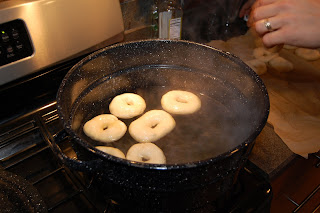It wasn’t until just now that I figured what I did wrong with this week’s bread. No don’t get me wrong, it’s not like I accidently mixed in a tablespoon of industrial waste and everyone who consumes my bread becomes BRIOCHE MAN! (Queue dramatic music)
No, rather, I didn’t read close enough and I didn’t wait until the gluten had time to develop. Here is what happened. It started way back in History, with that rhyme MCA and me, Mike D. No…wait, it started more like this.
I had created the sponge with no problem, and it even became a bubbling mass, just like the directions. It struck me odd that this bread was going to be something special, as no water is/was required and it was totally laden with fat. Whole milk, 5 eggs, and a crap load of butter. In case you don’t know, a crap load is a unit of measurement developed by Enos Jenkins in central Tennessee in the mid 1920’s.
I followed the recipe to (what I naively thought) the tea, or Tee, or T. However, once I started mixing and adding the butter, remember 1 pound of it, I knew something wasn’t right. There wasn’t any of the typically “doughy” feel to the mass, as any bread so far has felt. In fact, when I was done mixing the butter in and shaping the “loaf” to chill overnight, it reminded me more of sugar cookie dough.
After I took it out the next day and put it in loaf pans, I realized that there indeed was not going to be much in the way of rising. There was just not enough strength. Even if the bread could ferment, I doubted it could rise to any significant level. After a couple hours at church and running errands, I came back to loaves that barely filled the pans. I forged ahead and baked everything. Afterwards, to my surprise, the bread turned out. The crumb was tight, but it tasted good and wasn’t dense at all. It tasted like a good biscuit, and tasted even better with jam on it.
When I read the commentary on this bread, here’s what I found. We’ll see if you can decide what happened. “When a formula calls for lots of fat, whether butter, shortening, or oil, it is usually beneficial to wait until gluten had has an opportunity to develop before adding the fat. If the fat is added at the beginning, it coats the protein fragments and makes it difficult for them to bond into the longer, stronger gluten molecule.”
Next week I’m off, after that Casatiello.
















